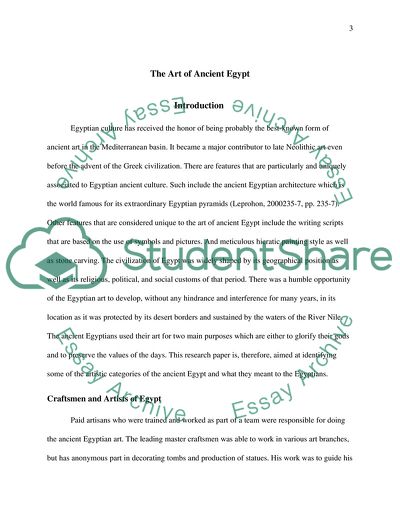Cite this document
(Ancient Egyptian Art - to Glorify Their Gods and to Preserve the Values of the Day Essay Example | Topics and Well Written Essays - 1500 words, n.d.)
Ancient Egyptian Art - to Glorify Their Gods and to Preserve the Values of the Day Essay Example | Topics and Well Written Essays - 1500 words. https://studentshare.org/visual-arts-film-studies/1854931-ancient-egypt-art
Ancient Egyptian Art - to Glorify Their Gods and to Preserve the Values of the Day Essay Example | Topics and Well Written Essays - 1500 words. https://studentshare.org/visual-arts-film-studies/1854931-ancient-egypt-art
(Ancient Egyptian Art - to Glorify Their Gods and to Preserve the Values of the Day Essay Example | Topics and Well Written Essays - 1500 Words)
Ancient Egyptian Art - to Glorify Their Gods and to Preserve the Values of the Day Essay Example | Topics and Well Written Essays - 1500 Words. https://studentshare.org/visual-arts-film-studies/1854931-ancient-egypt-art.
Ancient Egyptian Art - to Glorify Their Gods and to Preserve the Values of the Day Essay Example | Topics and Well Written Essays - 1500 Words. https://studentshare.org/visual-arts-film-studies/1854931-ancient-egypt-art.
“Ancient Egyptian Art - to Glorify Their Gods and to Preserve the Values of the Day Essay Example | Topics and Well Written Essays - 1500 Words”. https://studentshare.org/visual-arts-film-studies/1854931-ancient-egypt-art.


